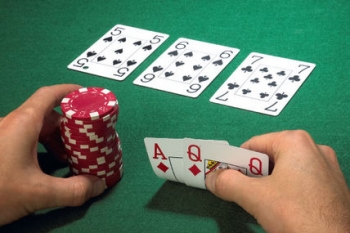The Basics of Continuation Betting

The c-bet has been one of the most profitable weapons for skilled players for years. As such, it was inevitable that it be overused and abused not only by those who know perfectly well how to wield it optimally, but by all those who figured they wanted in on the profits generated by these continuation bets.
The c-bet is a wonderful way to take advantage of the equity and table image generated by one’s preflop actions. If you raise preflop, you will probably fire out a c-bet past the flop, whether it hits you or not. Unfortunately, the very fact that it has become this commonplace has taken a lot of edge out of the c-bet. The group of TAG-fish losing a lot of money by making c-bets and folding afterwards has also emerged. For many, abusing and misusing c-bets has become the major source of red-line woes.
Nowadays, placing a preflop bet, then following it up on the flop with a half-hearted c-bet, which basically screams weakness, is predictable and exploitable poker. Simple second-barrel c-bets will be picked off and called sometimes just for the heck of it, to see how the bettor reacts on the turn.
The solution? C-betting more carefully and waiting patiently until the factors which facilitate successful c-bets align.
Making reads on your opponents is the first step: tight players are more likely to actually have something when they make the call on the flop. Loose players on the other hand may have just about anything. The new trend is to smooth-call flops just to get the pulse of the c-bettor on the turn. Callers will generally have a weak made hand or a weak draw, and the call is made with the sole intention to allow the opponent to see “what happens” down the line. The obvious solution to defeating these ‘anti-c-bettors’ is to just keep up the pressure on the turn, by firing yet another barrel. Now the problem here is that if you get to abuse this approach as well, you will stand to lose even more money, and the solution will quickly degenerate into an even bigger problem.
The first thing you have to take a look at before firing that third barrel are the cards. There are cards that facilitate this approach and cards that don’t. Cards that improve your perceived range and hurt his range are specifically what you’re looking for.
If the board gives you cards that obviously hurt your opponent’s range, yeah definitely: go for that third barrel. If the cards improve his range though, encouraging him to bet and call bets, there’s only one thing left for you to do: fold and save the extra bet you would’ve wasted.
The whole thing is a highly theoretical one, based on subtle reads and hunches, but then again, that’s what high-level poker should be about. Again: the process of analysis that you should go through before deciding to go for that third barrel is the following: think about whether the card that just landed helped your perceived range. Then think about whether or not it hurt your opponent’s range. If you can safely answer yes to both those questions, then go for the additional bet. If not, just fold. Sign up for a poker prop deal or for at least a square rakeback deal, to claim as much of your rake back as possible. After all, why shouldn’t you pick up the money your poker room is willing to toss your way?




